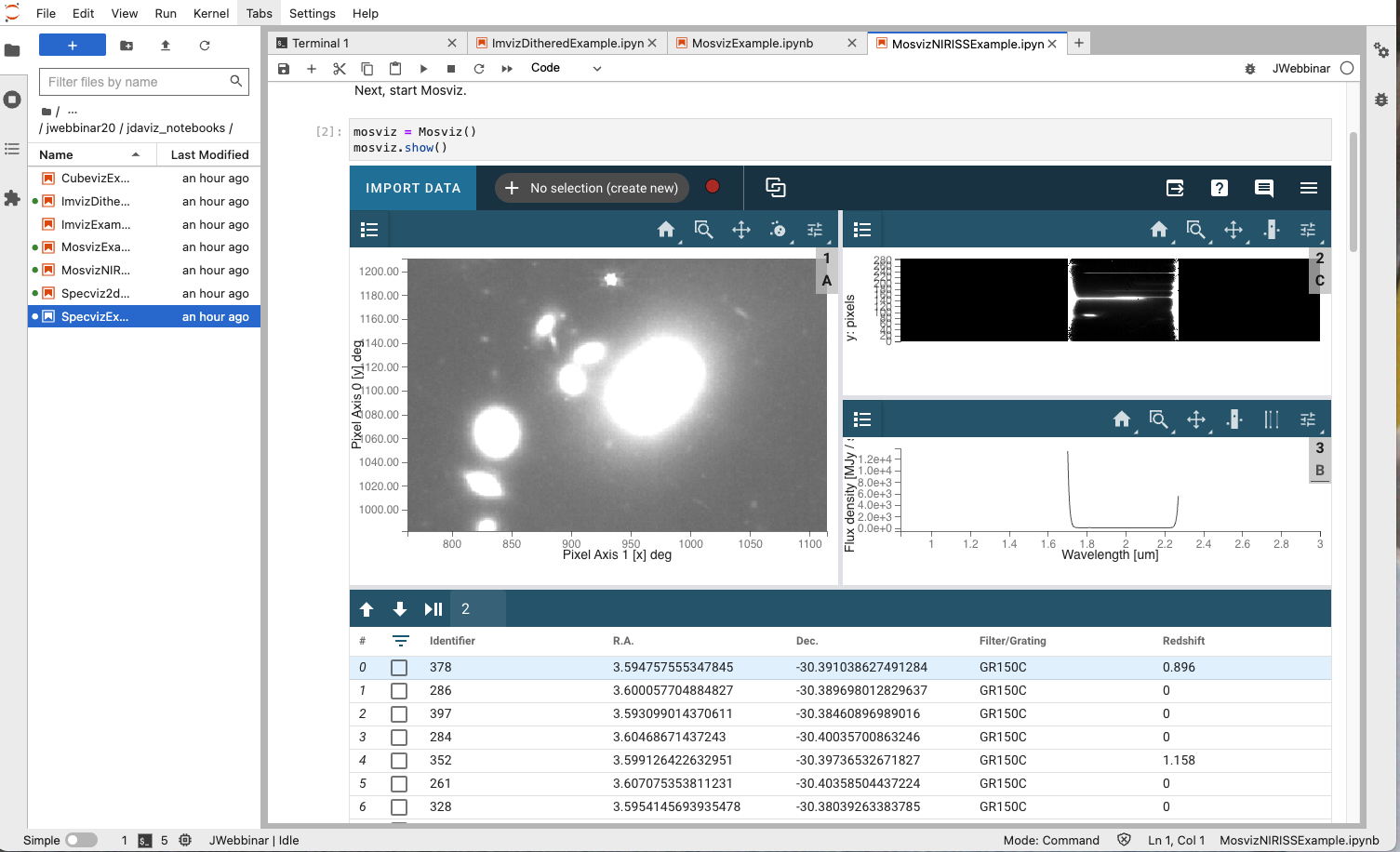This chapter introduces the Cloud Science Platforms, why you might use them, and how to get your own free JupyterHub account.
On this page...
In this chapter...
What are "Cloud Science Platforms"?
The Cloud Science Platforms are cloud-compute environments that enable you to start remote JupyterLab sessions in your browser. These environments include pre-installed astronomical software and development tools appropriate for performing mission-specific processing, such as data calibration, analysis, visualization, machine learning, and training.
Output in JupyterLab can include images, plots, tables, and even interactive windows; all derived from the execution of Notebook code and rendered directly on your web page. Figure 1 below shows an example of Mosviz, a multi-object spectroscopy tool, running in a Notebook.
Figure 1 – Example JupyterLab work space for Mosviz.
Why should I use a platform?
The primary reasons for using Cloud Science Platforms are:
- Cloud computing is performed near MAST Archive data, providing the fastest possible access to the vast collection. Make full use of terabytes of data with no download delay, no need to expand your computer's storage, and, perhaps most importantly, without paying for anything.
- Platforms bypass the fuss of installing your own software environment. Log on to JupyterLab with curated software installations and start running code.
- Work done with Notebook serves as richly documented step-able code, perfect for teaching hands-on classes or seminars. Many platforms include this content by default, so you don't need to write your own! See the Tutorial Notebooks section below to get started.
Getting Set Up with a MyST account
To use the Science Platforms, you need a MyST account. Click the Create User panel to request an account.
Once you have your account, click the Launch button in the Registered Users panel to set properties and preferences for your account.
Why do I need an account?
Using the platforms gives you access to storage and compute resources. These are neither free nor unlimited resources. To maintain a consistent user experience, we need to have user accounts. Through accounts, we can assign each user a finite amount of storage and processing power. This also allows us to create backups and contact you in case of any issues.
Tutorial Notebooks
The Jupyter Notebook collections below are created and curated by STScI. They demonstrate a wide array of tools and techniques, across many missions and observatories.
- TIKE Notebooks (TESS, Kepler, and K2 on the cloud)
- Example JWST Pipeline Notebooks
- Jdaviz Notebooks
- Space Telescope Notebooks
Further Reading
More details about the Cloud Science Platforms can be found under:
